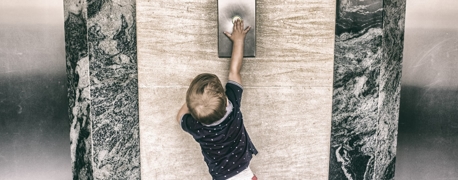6 Things You Didn’t Realize About Serious Burn Injuries

There are tens of thousands of people who suffer burn injuries every year, and hundreds of them suffer fatal or life-changing harm. As a burn injury law firm, we've seen many of those people firsthand, walking them through the process of holding wrongdoers accountable while getting them the treatment they need.
This week is National Burn Awareness Week, so we felt that it was necessary to talk about the long-term ramifications many of our clients face for the rest of their lives. Here are six things most people don't know about burn injuries.
#1: Burn Injuries Are Among the Most Expensive Injuries Anyone Can Get
The average hospital stay for a serious burn is longer than other hospital stays, but they're also more labor intensive: burn victims often require around-the-clock care from specialized burn treatment centers, which inflate costs. As a result, the average burn-related hospital stay is over twice as expensive as the average non-burn-related stay.
However, hospital costs aren't a patient's only concern.
According to healthcare research non-profit Research!America, burn-related medical costs exceed $1.5 billion every year in the U.S., but indirect (non-hospital) costs related to burn care were over 3 times more expensive. Indirect costs include the lost wages and cost of wound maintenance imposed on the patient over time.
#2: Immunosuppressants Could Prevent Fatal Burn Injuries
In the hours after a burn injury, the medical team's primary task is making sure a partial-thickness burn doesn't become a full-thickness burn—a process called "conversion." Full-thickness burns have a much higher rate of infection and mortality, so preventing conversion can mean the difference between life and death.
New research shows that using immunosuppressants (which prevent inflammation) directly on the wound can actually reduce the conversion rate of partial-thickness burns. Now, researchers are testing the use of other kinds of anti-inflammatory medications to help with burn patient outcomes.
#3: Delirium Is a Common Side-Effect of Serious Burns
Delirium is a temporary disorder that affects a person's mental faculties, confusing their thinking and making them less aware of their surroundings. Delirium manifests as hyperactive (hallucinations, agitation) or as hypoactive (dazed, inability to recognize loved ones).
But did you know that burn injuries and delirium often occur together? A study from the Journal of Burn Care and Research in 2010 found that up to 77% of burn patients who required a breathing tube develop delirium, and about 15% of burn victims develop delirium after surgery.
As long as the underlying medical causes are addressed, delirium goes away, but it can still be startling for the patient's loved ones.
#4: Depression Is Common After a Visible Burn Injury
People who suffer visible burn injuries, scarring, or disfigurement are at a higher risk of depression and social isolation. Unfortunately, people often react to visible burn injuries with startled glances, double-takes, or even probing questions. Without support, these social responses can erode a person's esteem and mental health.
Thankfully, there exist groups and programs like the Phoenix Society for burn injury survivors that offer social training and peer support to help burn victims cope with (or even embrace) social obstacles.
#5: Burn Scars Are Caused by Disorganized Skin Fibers
The development of hypertrophic burn scars, or raised scarring, is the result of disorganized collagen. When the skin suffers damage at its lowest layers, the body will lay down collagen fibers to heal the damage. Ideally, the collagen is deployed in clean and organized lines to allow the skin to heal completely.
However, age, ethnicity, and burn severity can cause collagen to lay down haphazardly, which results in raised scars. These scars have less pliability and mobility than regular skin, and they're more sensitive to the sun—at least for 12-18 months.
Thankfully, there are ways to improve the flexibility of burn scars, which brings us to our last little-known fact...
#6: Stretching, Massage, & Exercise Can Improve Burn Scars
Burn scars can sometimes form "contractures," which are areas around the joint that are difficult to bend or move due to scarring. Scars are less pliable and flexible than regular skin, which means scarring around the elbows or knees can make it difficult to stretch your arm out, sit down, or walk up stairs.
Fortunately, you can improve the flexibility of your scars through massage, stretching, and exercise. Stretching and massage can make scars looser and softer. Additionally, exercise can strengthen and loosen scar fibers as well. A regular regimen of mobility exercises and stretching can improve a burn victim's comfort and flexibility over time.
Get the Care You Need After a Burn Injury
Recovering from a burn injury is about quality of life, and rebuilding quality of life takes serious resources. If you were burned in an accident, then you don't need to pay for those resources on your own. The people or company that caused your accident needs to take responsibility for what happened to you, and that includes taking responsibility for your medical care.
Arnold & Itkin has won over $20 billion in verdicts and settlements holding companies accountable for wrongdoing. We've changed our clients' lives forever, helping them get medical care, replace lost wages, and more. Speak with us in a free consultation to learn your options as soon as possible.
Call (888) 493-1629 today for a free consultation.
- Categories


